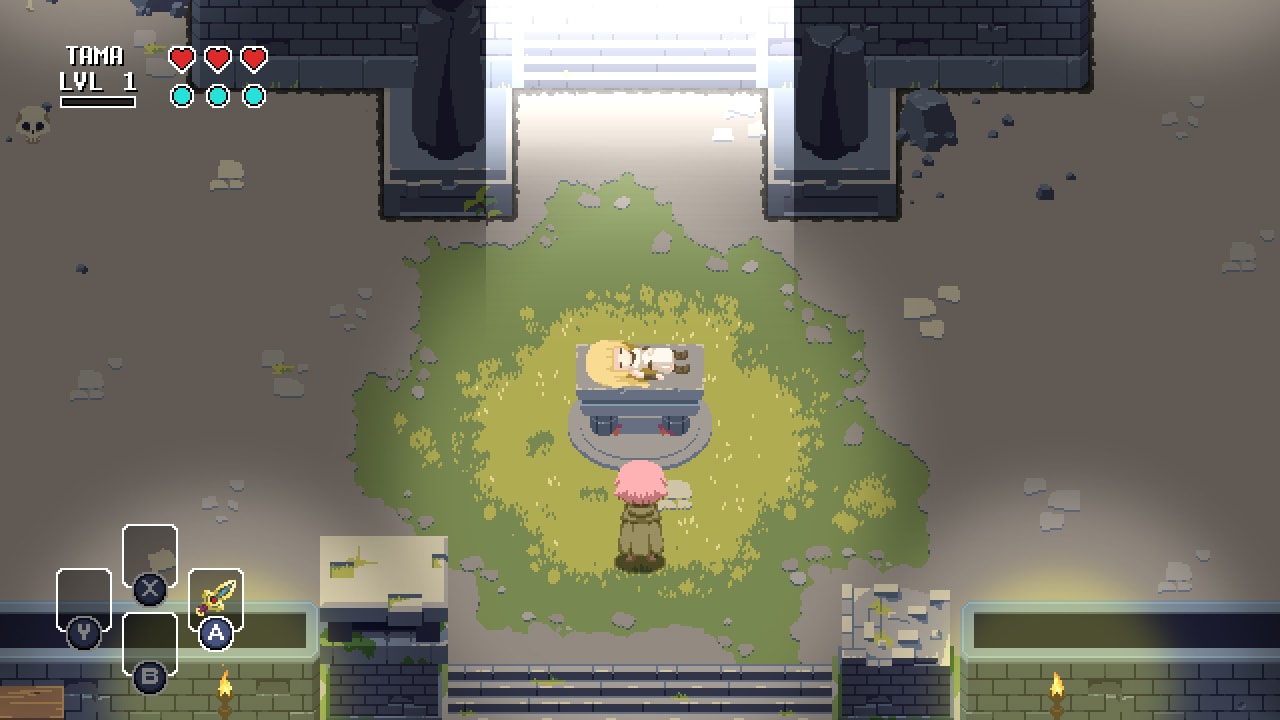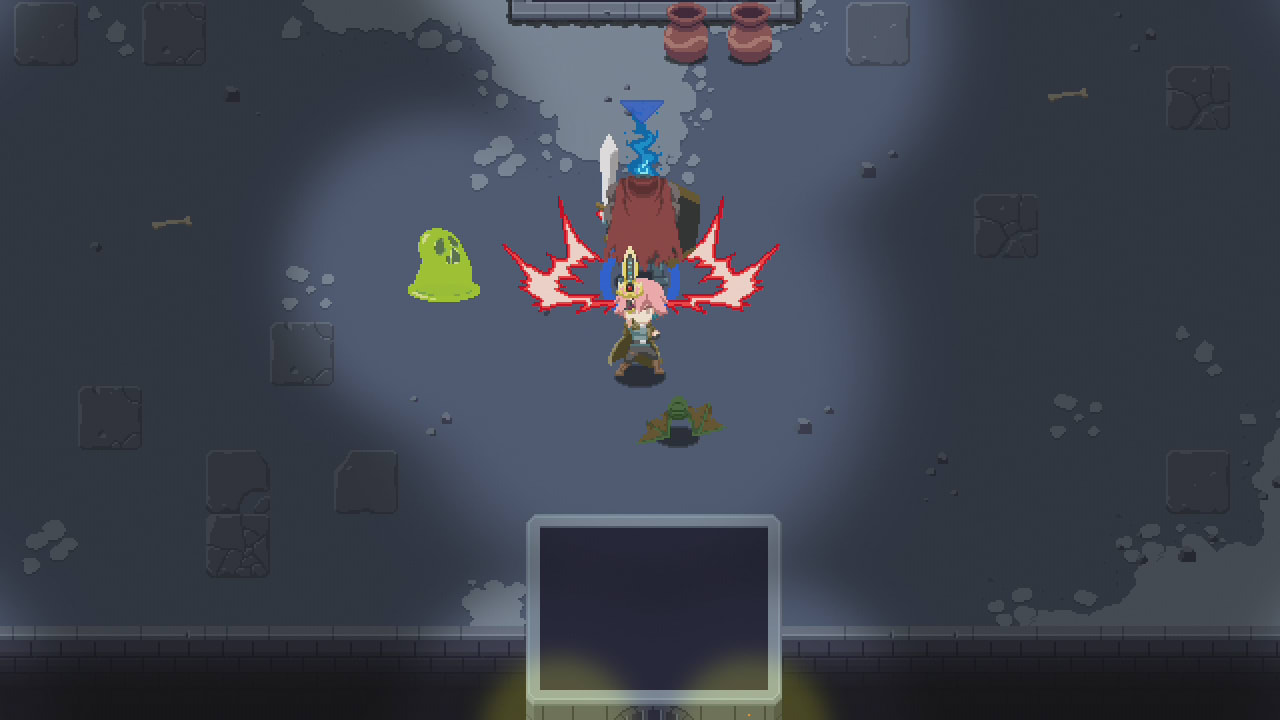Sword of the Necromancer tells the story of Tama, a former rogue who is tasked to escort the priestess Koko on her pilgrimage around the continent. Unfortunately, during the trip, Koko dies. Our protagonist carries the dead body of Koko to the Necromancer’s crypt, where legends say there dwells a power that may resurrect the dead. Tama heads into the dungeon hoping to find the mysterious power of necromancy to bring Koko back to life.
Sword of the Necromancer is a dungeon-crawler action RPG mixed with rogue-like elements. Think of it as Legend of Zelda with a pinch of rogue elements. You’ll go through each dungeon killing enemies, earning XP in order to level up and make you stronger. Unlike its classic counterpart, Sword of the Necromancer has a surprisingly high amount of weaponry. Each controller face button can be used as an attack, depending on what you pick up; sword, ax, bow, etc… You can also pick up passive items such as an Amulet that increase defenses against wind attacks or another one that increases critical hits.

One of the key elements of the game is the actual sword of the Necromancer that you pick up early on. It will allow players to revive any downed enemy and use them in battle; a bit like Pokémon. The revived enemy, now friendly, will be assigned to an available controller face button and can be summoned in battle. You can also stow away four items/weapons in your magical chest à la Resident Evil. In this case, pressing the right joystick will bring up your inventory where you can move stuff to your chest. When back at the entrance, you can also upgrade your weaponry by adding element perks or buffs thanks to finding various materials throughout your adventure.
When you die in one of the levels of the dungeon, you’re thrown back at the beginning of it. Unfortunately, being a rogue game, you’ll also be stripped of your weaponry and skills meaning you have to start back up from scratch. That’s my main complaint here because rogue-lite games, being an interesting genre in itself, gamers can feel frustrated and discouraged by having to start over again repeatedly. Additionally, the level layout changes so forget about taking notes and whatnot; you’re going in fresh every time.

Interestingly enough, despite its rogue mechanics, you’re given the choice to disable some of them once you start the game. As you might know, rogue games are notoriously difficult and frustrating because when you die, you are more often than not thrown to the start of the game devoid of all upgrades and weapons you might’ve picked up throughout your adventure. With Sword of the Necromancer, these are things you can actually disable so you can actually have a sense of progress.
That being said, not everything is perfect. Combat can sometimes feel stiff and sluggish; a big problem when it’s literally life or death. Also despite all of its uniqueness and appeal, as with any top-down Zelda-like clones, repetition will set in after a few levels; an ever-changing level layout can somewhat alleviate this, but it won’t save it. Also finding resources to upgrade your weapons will seemingly take forever. Another important detail, after each boss battle, you’ll be prompted to either warp back to the entrance or open your chest; just make sure to keep going up to find the exit otherwise, you’ll have to restart the level… including the boss battle.

The game looks great in all its pixelated glory. Level design is pretty barebone, however. Sure, the color palette will change throughout the different areas of the overall dungeon, but there aren’t drastic differences between them; it’s the same formula: roam around, find a key, open the door. This is a situation where they could’ve benefited from taking inspiration from the classic top-down Zelda games. The soundtrack is a fun one; it has a unique sound to it; while sounding familiar, it has its own unique flair.
While far from perfect, Sword of the Necromancer is a surprising gem that came out of nowhere. It has its charm and while not a fan of the genre, the Zelda mixed with rogue-like works; short levels make it work, and the fact that you can disable some of the rogue elements gives the game a chance to reach a broader audience beyond those who love the rogue genre. Sure combat isn’t perfect and there’s a bit of repetition, but if you’re looking for a classic Zelda clone on Xbox, albeit a bit shorter, you can’t go wrong here.
Overall
-
CX Score - 60%60%
Summary
Pros
- Disabling certain rogue-lite mechanics
- Fun bosses
- Using dead enemies are team members
Cons
- Slow/sluggish combat

